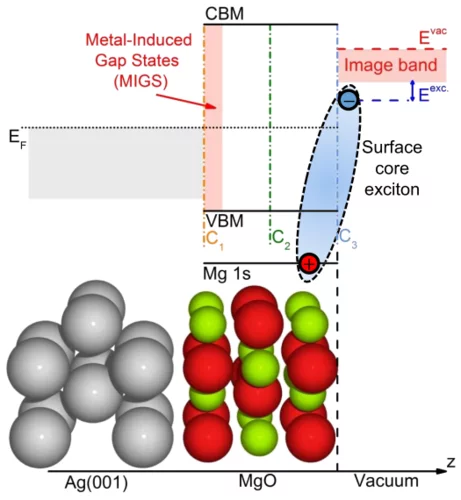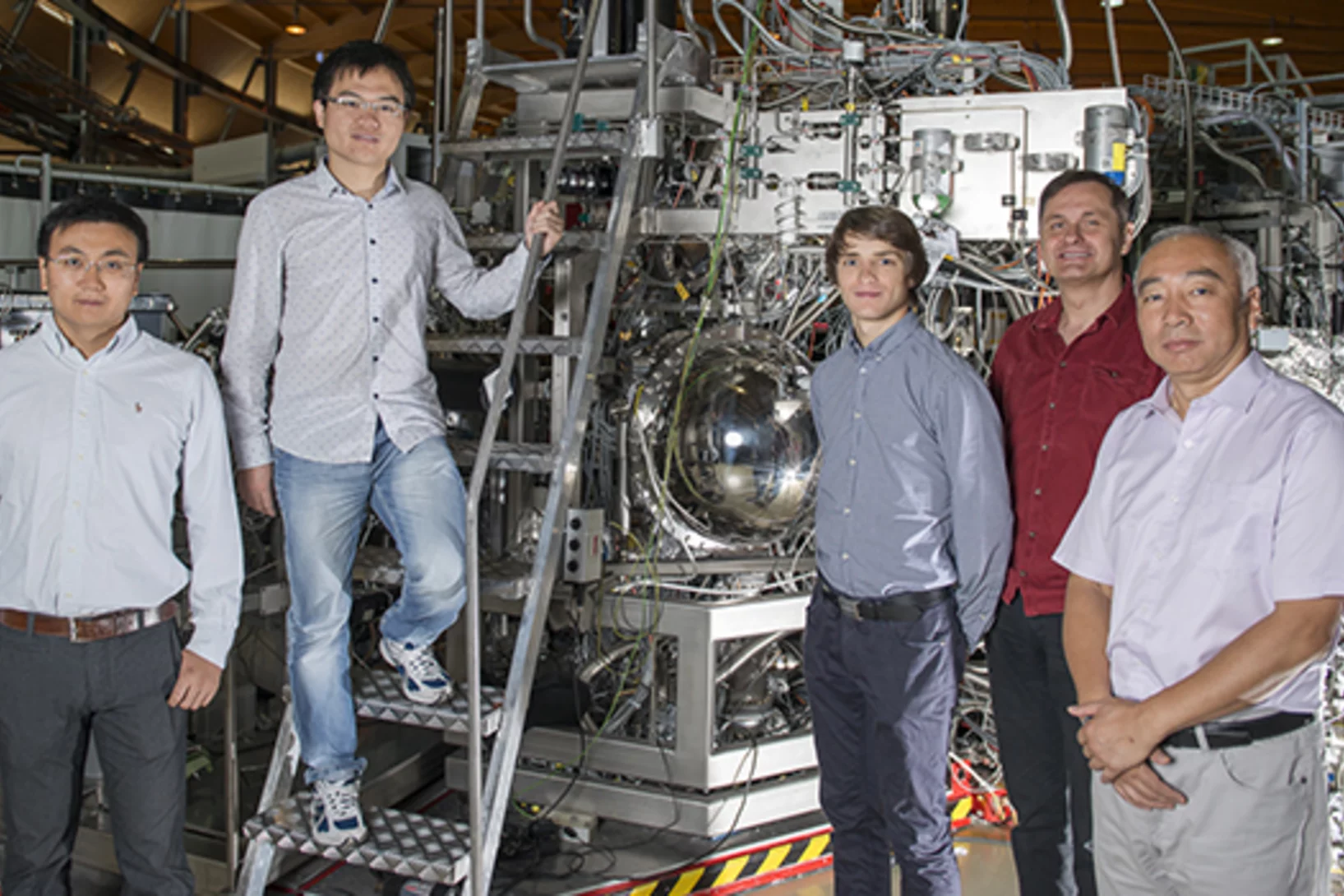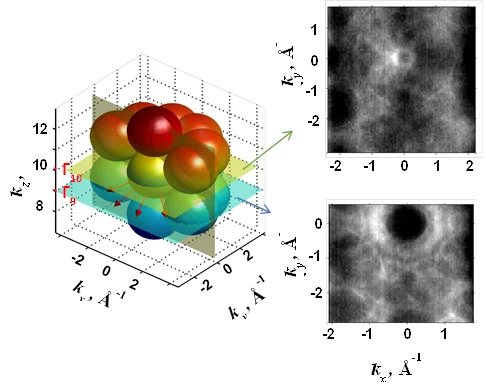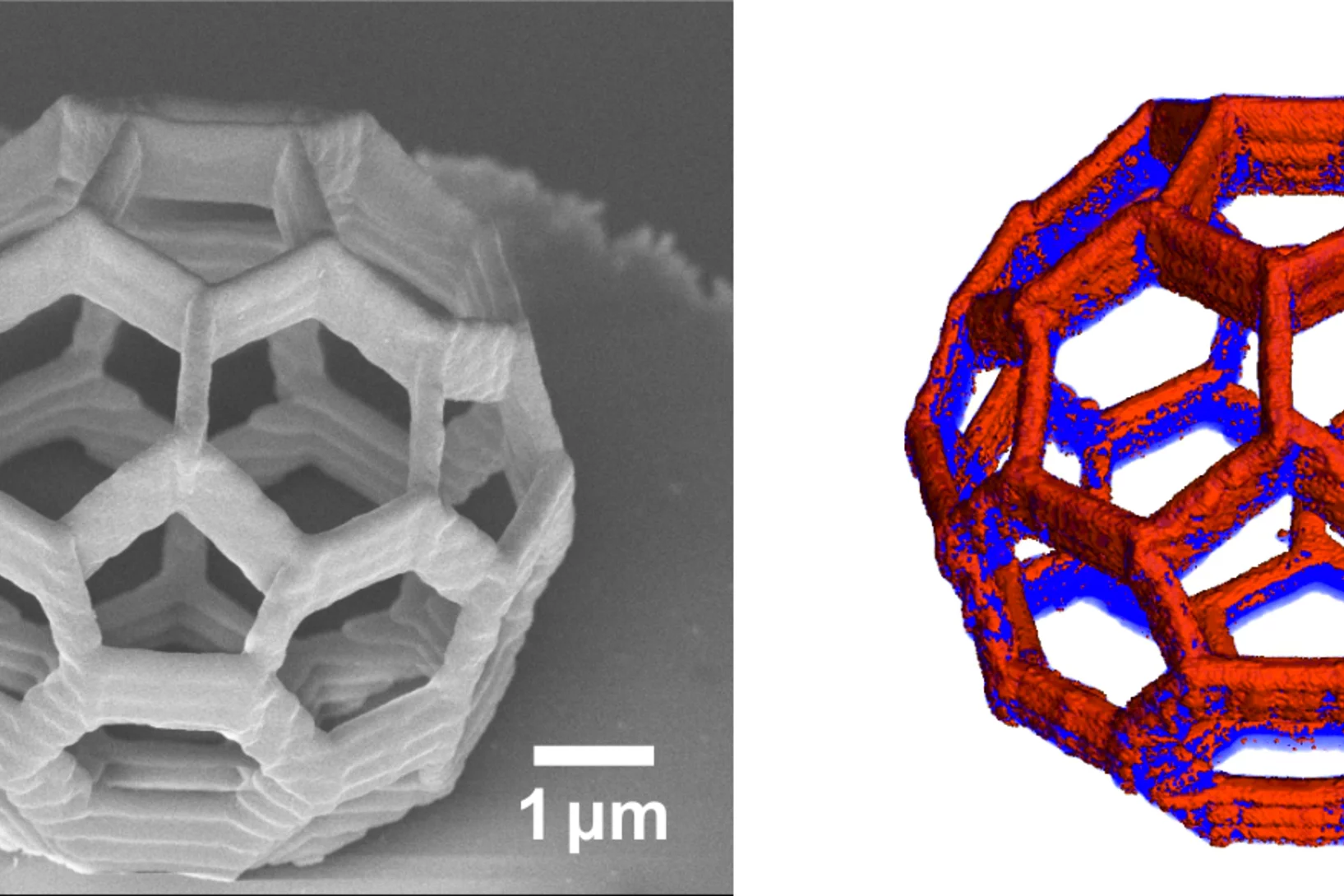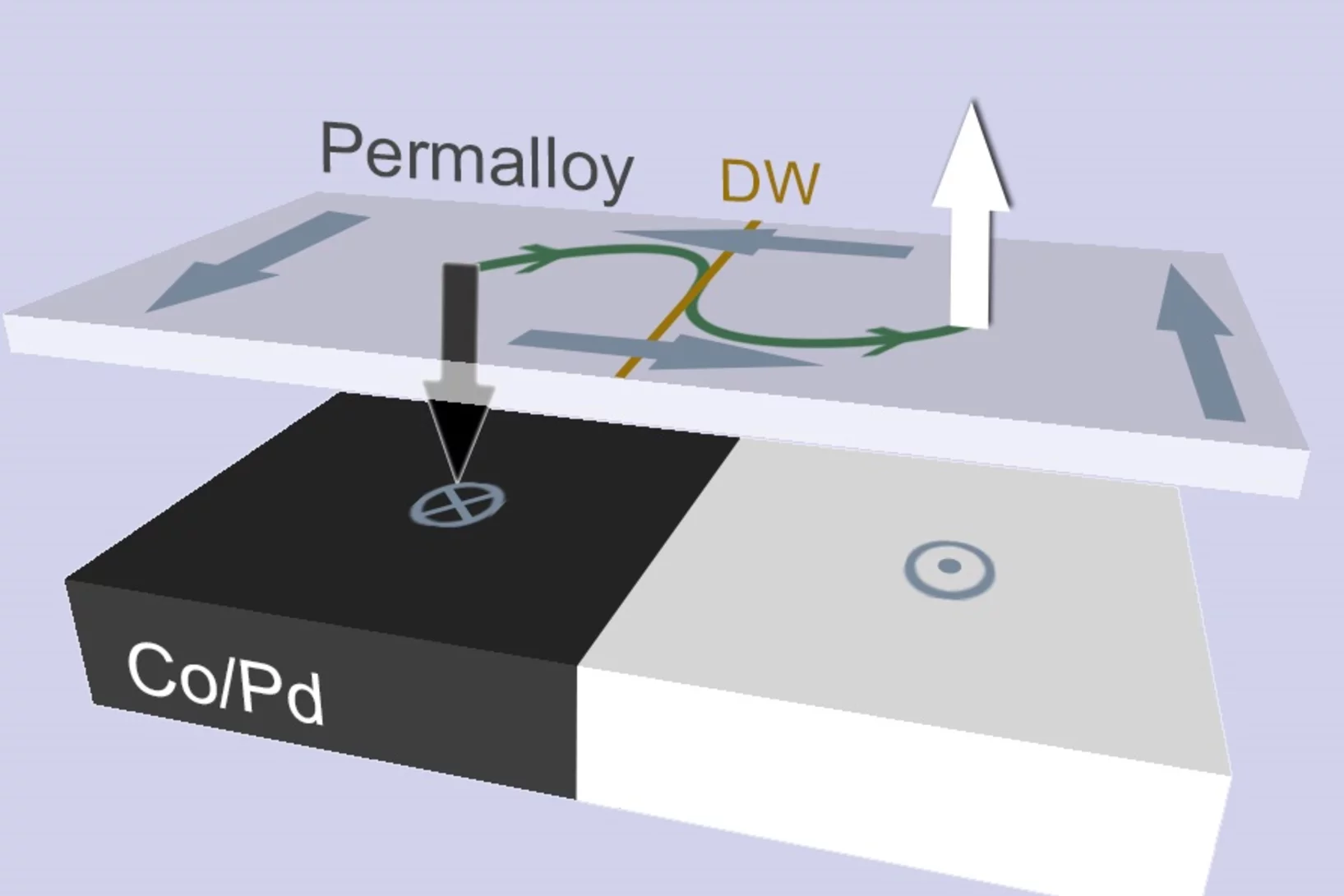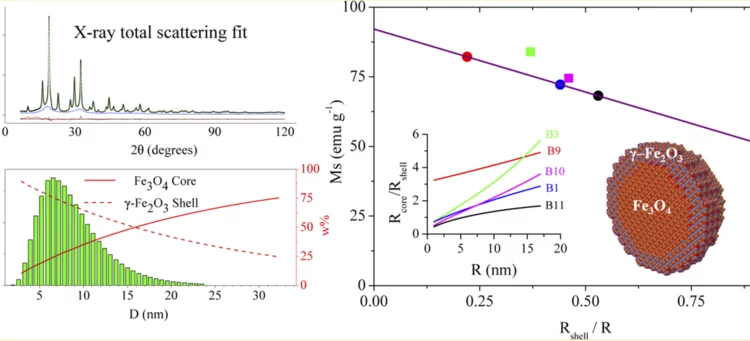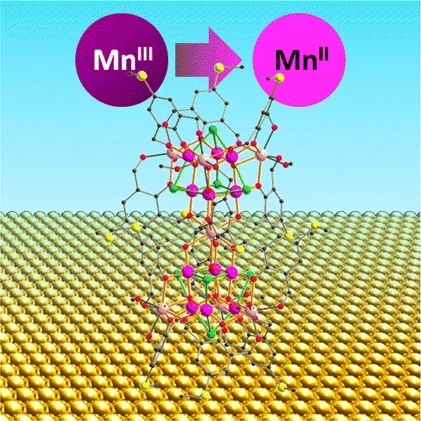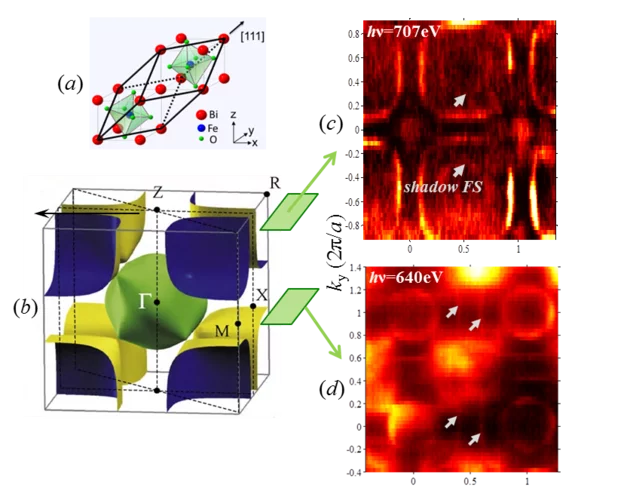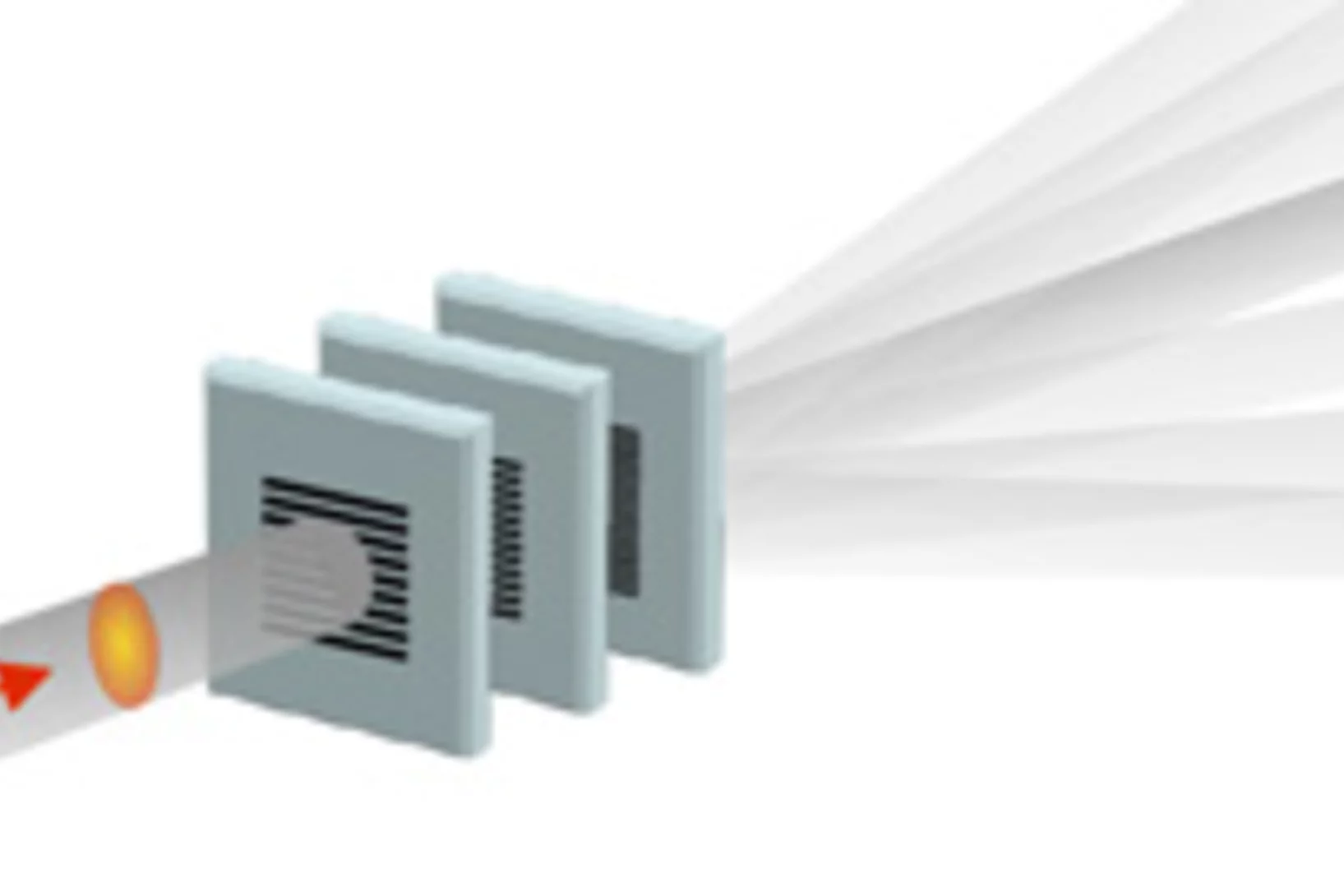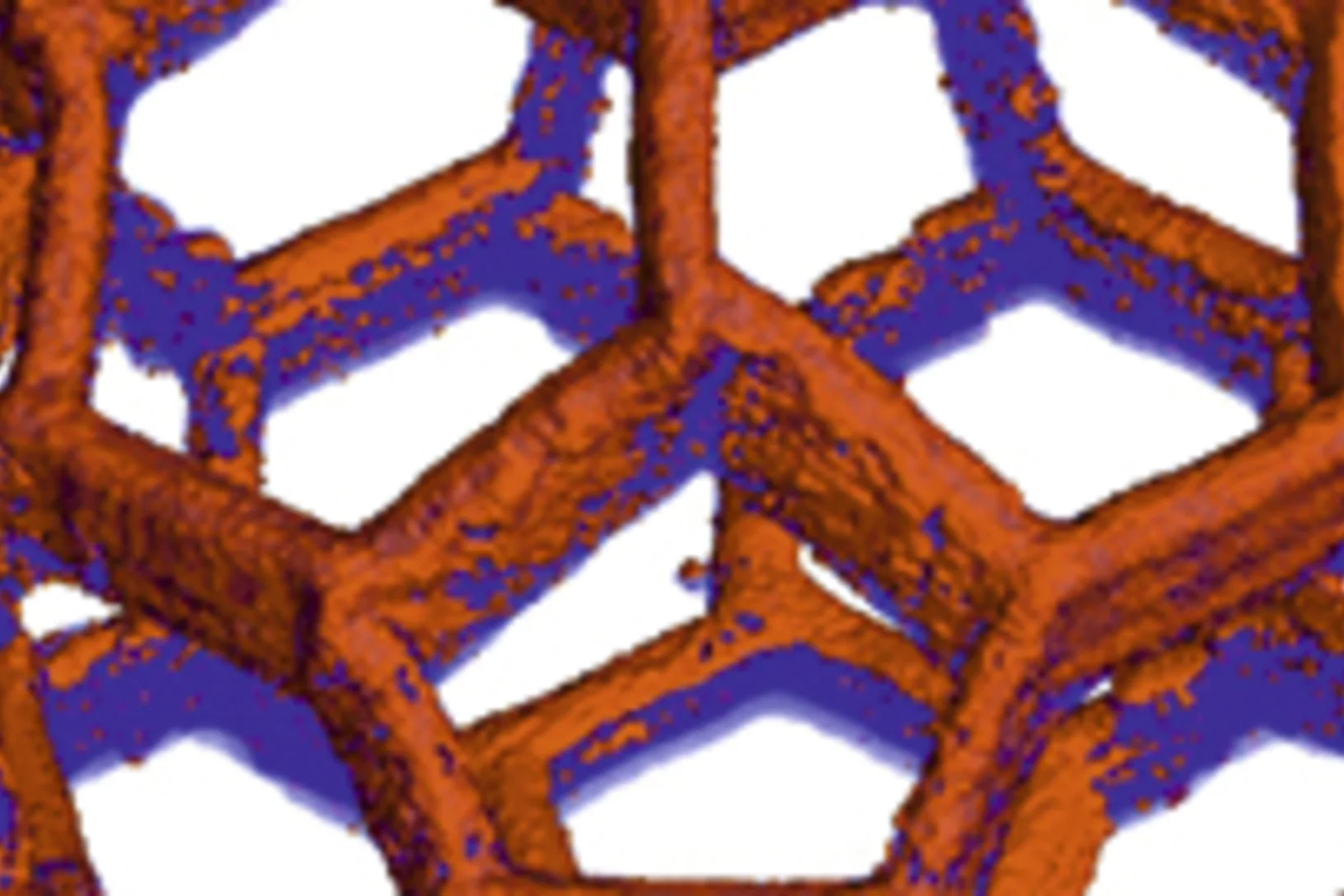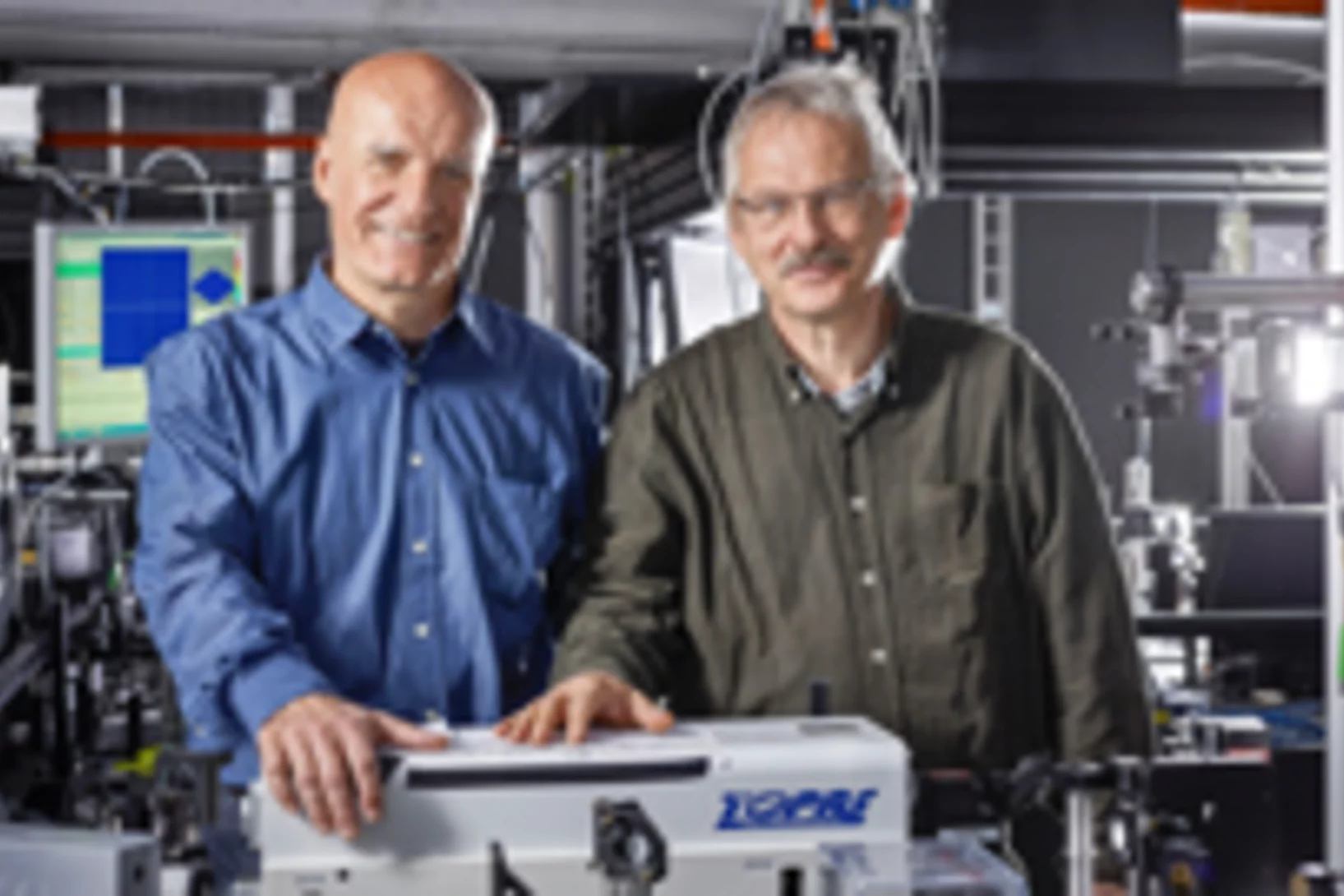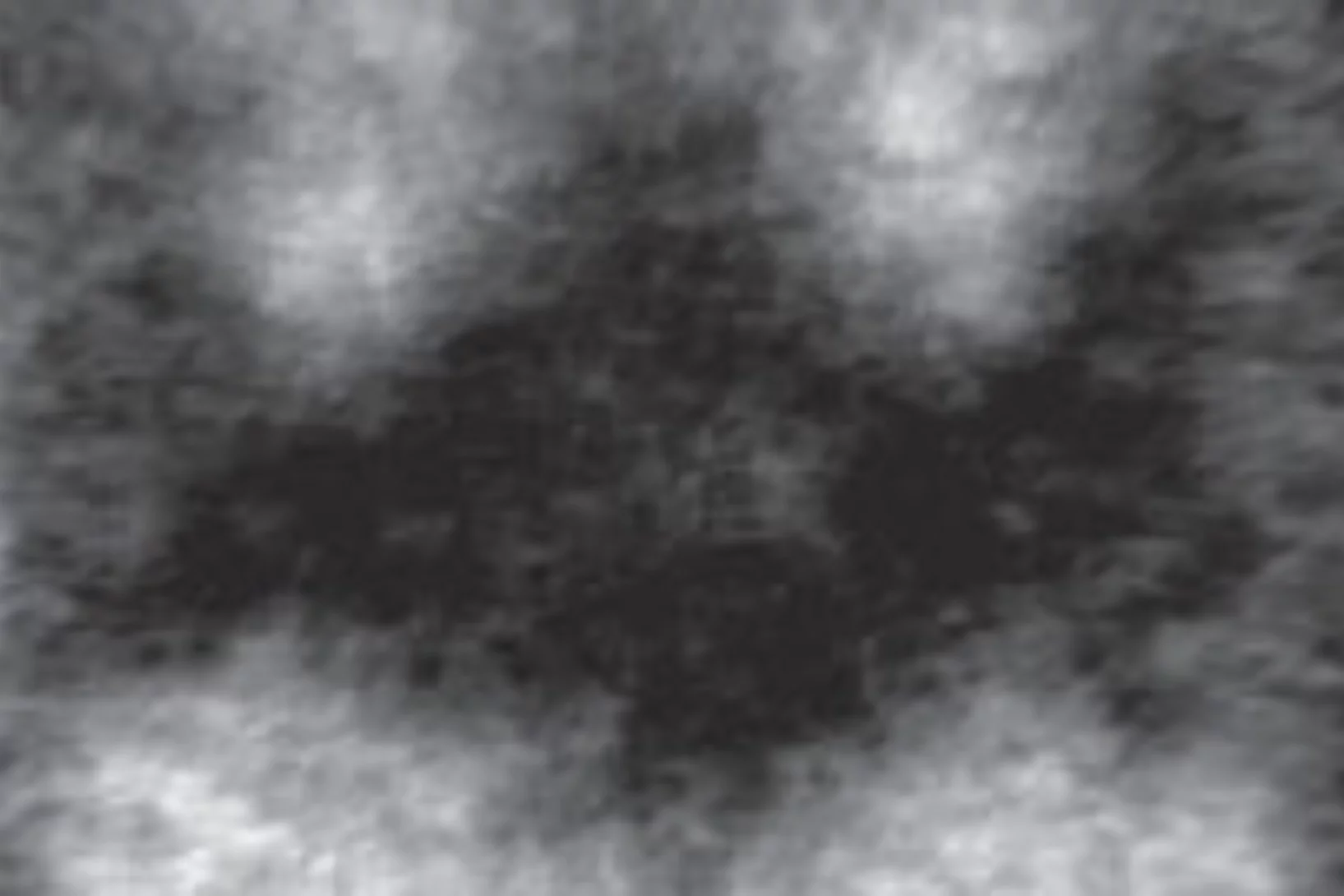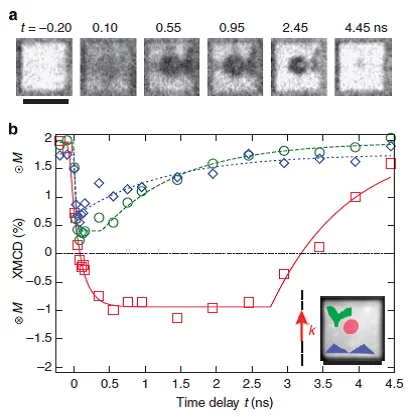Excited states at interfaces of a metal-supported ultrathin oxide film
At the PEARL beamline, metal-supported ultrathin oxide films have been studied which are a class of materials of technological importance in various research fields such as catalysis, spintronics, or nanoelectronics.
Cousin des Elektrons nach 86 Jahren gefunden
Physiker des Paul Scherrer Instituts PSI gemeinsam mit Kollegen aus China sowie von der ETH Zürich und der ETH Lausanne EPFL haben bei Versuchen an der Synchrotron Lichtquelle Schweiz SLS ein Teilchen nachgewiesen, dessen Existenz bereits vor 86 Jahren vorausgesagt worden war. Es handelt sich um ein Mitglied der Teilchenfamilie, zu denen auch das Elektron, der Träger elektrischer Ströme, gehört. Anders als das Elektron hat das neue Teilchen aber keine Masse und es kommt nur in einer bestimmten Klasse von Materialien vor, die als Weyl-Halbmetalle bezeichnet werden.
Fermi states and anisotropy of Brillouin zone scattering in the decagonal Al–Ni–Co quasicrystal
Quasicrystals (QCs) are intermetallic alloys where excellent long-range order coexists with lack of translational symmetry in one or more dimensions. These materials have a high potential in application as a material for a solar cells, hydrogen storage applications, heat insulating layers, and others.
Auf der Suche nach dem kleinsten Bit
Für immer kompaktere Speichermedien der Zukunft müssen magnetische Bereiche – die Speicherbits – immer kleiner werden. Doch wie klein kann ein Magnet überhaupt werden? Frithjof Nolting und seine Kollegen erforschen am Paul Scherrer Institut PSI den Nanomagnetismus.
Element-Specific X-Ray Phase Tomography of 3D Structures at the Nanoscale
Recent advances in fabrication techniques to create mesoscopic 3D structures have led to significant developments in a variety of fields including biology, photonics, and magnetism. Further progress in these areas benefits from their full quantitative and structural characterization.
Nanoscale switch for vortex polarization mediated by Bloch core formation in magnetic hybrid systems
Vortices are fundamental magnetic topological structures characterized by a curling magnetization around a highly stable nanometric core.
Correlating the Core-Shell Composition and the Surface Structure to the Magnetic Properties for Magnetite-Maghemite Nanoparticles in the 5-15 nm Range
Very small superparamagnetic iron oxide nanoparticles were characterized by innovative synchrotron X-ray total scattering methods and Debye function analysis, developed at the X04SA Materials Science beamline of SLS.
Reduction of Mn19 Coordination Clusters on a Gold Surface
The surface-induced changes of the oxidation state and magnetic properties of Mn ion clusters have been probed by X-ray absorption spectroscopy and X-ray magnetic circular dichroism.
Concept of a multichannel spin-resolving electron analyzer based on Mott scattering
The spin of electron plays a crucial role in many physical phenomena, ranging from the obvious example of magnetism, via novel materials for spintronics applications, to high-temperature superconductivity. Spin- and angle-resolved photoelectron spectroscopy (SARPES) gives the most direct access to the spin aspects of the electronic structure, but the one-channel detection principle of all presently available SARPES spectrometers severely limits their efficiency. A team of Swiss and Russian scientists has developed a revolutionary concept of a multichannel electron spin detector based on Mott scattering as the spin selective process and imaging-type electron optics.
Fermi Surface of Three-Dimensional La1−xSrxMnO3 Explored by Soft-X-Ray ARPES: Rhombohedral Lattice Distortion and its Effect on Magnetoresistance
A research team led by scientists from the Swiss Light Source has for the first time established three-dimensional (3D) electronic structure of the perovskite compound La1−xSrxMnO3 connected with its colossal magnetoresistance. Instrumental for this study has been the use of the new experimental technique of soft-x-ray ARPES, available at the ADRESS beamline, with its intrinsically sharp definition of 3D electron momentum.
Gespaltener Röntgenblitz zeigt schnelle Vorgänge
SwissFEL, der Röntgenlaser des PSI, wird die einzelnen Schritte sehr schneller Vorgänge sichtbar machen. Ein neues Verfahren soll besonders genaue Experimente ermöglichen: Dabei werden die einzelnen Röntgenblitze in mehrere Teile aufgespalten, die nacheinander am Untersuchungsobjekt ankommen. Das Prinzip des Verfahrens erinnert an die Ideen der frühesten Hochgeschwindigkeitsfotografie.
Nanometer in 3-D
Forschende haben 3-D-Bilder winziger Objekte erzeugt und konnten dabei sogar 25 Nanometer grosse Details (1 Nanometer = 1 Millionstel eines Millimeters) sichtbar machen. Dabei haben sie nicht nur die Form der Untersuchungsgegenstände bestimmen können, sondern auch gezeigt, wie ein bestimmtes chemisches Element (Kobalt) darin verteilt ist und ob es in einer chemischen Verbindung oder in Reinform vorliegt.
Vorbereitet für den SwissFEL
Seit Jahren testen PSI-Forschende Experimentiermethoden, die am Röntgenlaser SwissFEL Einblicke in neuartige Materialien für elektronische Geräte ermöglichen werden. Mit einem besonderen Trick bringen sie dafür die Synchrotron Lichtquelle Schweiz SLS des PSI dazu, Licht zu erzeugen, das ähnliche Eigenschaften hat, wie dasjenige des SwissFEL. So konnten die Forschenden zeigen, dass die geplanten Experimente im Grundsatz möglich sind und den Bau des entsprechenden Messplatzes am SwissFEL vorschlagen.
Ultrafast structural dynamics of the Fe-pnictide parent compound BaFe2As2
Understanding the interplay of the various degrees of freedom such as the electrons, spins and lattice is essential for many complex materials, including the high-temperature superconductors.
Batman zeigt den Weg zu kompakter Datenspeicherung
Forschenden am Paul Scherrer Institut PSI ist es gelungen, winzige magnetische Strukturen mit Laserlicht umzuschalten und die Veränderung zeitlich zu verfolgen. Dabei blinkte kurz ein nanometergrosser Bereich auf, der skurrilerweise an das Fledermaus-Symbol von Batman erinnert. Die Forschungsergebnisse könnten die Datenspeicherung auf Festplatten kompakter, schneller und effizienter machen.
Nanoscale sub-100 picosecond all-optical magnetization switching in GdFeCo microstructure
Ultrafast magnetization reversal driven by femtosecond laser pulses has been shown to be a promising way to write information. Seeking to improve the recording density has raised intriguing fundamental questions about the feasibility of combining ultrafast temporal resolution with sub-wavelength spatial resolution for magnetic recording. Here we report on the experimental demonstration of nanoscale sub-100 ps all-optical magnetization switching, providing a path to sub-wavelength magnetic recording.


